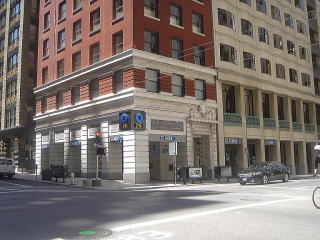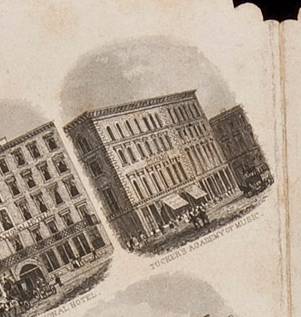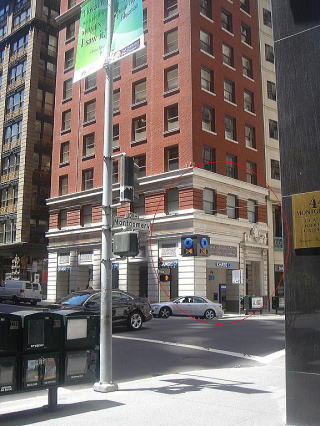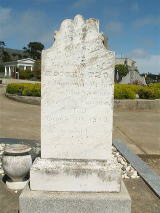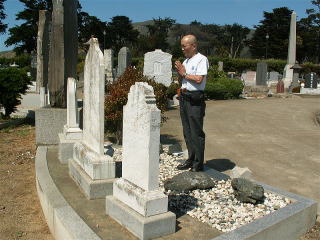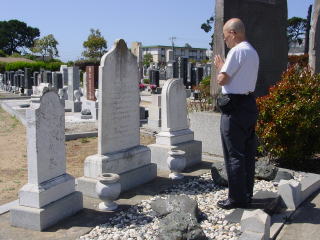| |
||
| 古い絵図(1854年)で見る 遣米使節(1860年)当時のサンフランシスコ San Francisco in 1854 by old drawings Views before the Japanese Mission was sent to the United States in 1860 |
||
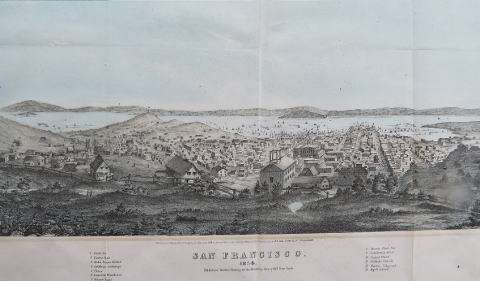 サンフランシスコ絵図 1854 東善寺蔵 Drawing of San Francisco, 1854 - Collection of Tozenji Temple |
||
| サンフランシスコの遣米使節 (9日間滞在) 漢数字は和暦 三月八日(3月28日・水) サンフランシスコ着 ヴァレホ埠頭の手前で停止。寄港せず咸臨丸を修理しているサンフランシスコ湾北北東のメーア島米国海軍造船所へ行く。 咸臨丸一行に再会し感激の対面、そのまま滞在。 三月 十日(3月31日・土) 三使らはサンフランシスコ市街へ蒸気船「アクティヴ号」で行き、インターナショナルホテルに泊る 三月十一日(4月1日・日) サンフランシスコ滞在 三月十二日(4月2日・月) 英・仏・露領事と面会 市役所へ行き幹部に挨拶、音楽学校で外国領事も列席の歓迎昼食会ののち、メーア島へ戻る 三月十五日(4月5日・木) 咸臨丸の修理にまだ時間がかかることと、米国の航海事情もわかってきたので、咸臨丸はパナマまで予定していた護衛を取りやめることとなる。ポウハタン号はまだ修理中の咸臨丸一行と別れ、メーア島からサンフランシスコへ移動。 三月十六日(4月6日・金) サンフランシスコ滞在 三月十七日(4月7日・土) 夕方サンフランシスコ発 (江戸では幕府が三月十八日萬延元年に改元) (18日間航海) 閏三月四日(4月24日・火) パナマ着(滞在なし・パナマ鉄道で大西洋側アスペンウォールへ) |
||
| Mission to the U.S. in San Francisco (9-day stay) JC = Japanese calender WC = Western calender WC March 28, Wednesday (JC March 8): They arrived in San Francisco, but stopped before the Vallejo Wharf. Then, they went to the U.S. Naval Shipyard on Mare Island, north-northeast of San Francisco Bay, where the Kanrin Maru was being repaired. Thrilled to meet the Kanrin Maru people again, they stayed on Mare Island. WC March 31, Saturday (JC March 10): The three envoys took the steamship "Active" to San Francisco City and stayed at the International Hotel. WC April 1, Sunday (JC March 11): The three envoys stayed in San Francisco. WC April 2, Monday (JC March 12): The three envoys met with British, French, and Russian consuls, went to City Hall to greet officials, attended a welcome luncheon at Tucker's Academy of Musicl attended by foreign consuls, then returned to Mare Island. WC April 5, Thursday (JC March 15): Since it still took time to repair the Kanrin Maru and the situation of the U.S. voyage became clearer, the Kanrin Maru's planned escort to Panama was cancelled. The Powhatan parted company with the Kanrin Maru, which was still under repair, and moved from Mare Island to San Francisco. WC April 6, Friday (JC March 16): They stayed in San Francisco. WC April 7, Saturday (JC March 17): They left San Francisco in the evening. (On JC March 18, the shogunate in Yedo changed the 7th year of the Ansei Era to the first year of the Man'en Era) WC April 24, Tuesday (JC Leap March 4): They arrived in Panama after voyaging for 18 days from San Francisco. They did not stay at Panama and took a train of the Panama Railroad to Aspenwall on the Atlantic Ocean side. |
||
| 下の絵図は1854年のサンフランシスコ 遣米使節が着いた6年後の1860年にはもう少し発展していただろう |
||
| The drawings below show San Francisco in 1854. When the mission to the U.S. arrived six years later in 1860, the city would have been a little more developed. |
||
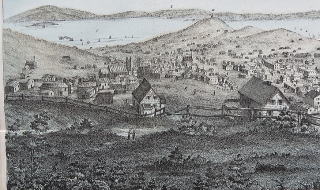 |
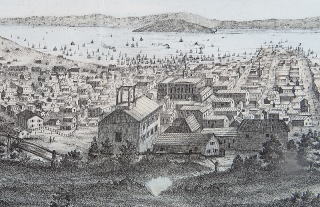 |
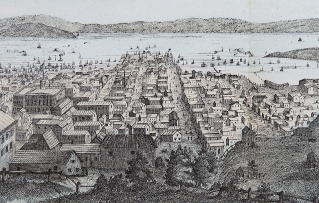 |
| 1図 Figure 1 | 2図 Figure 2 | 3図 Figure 3 |
| ▼絵図の下部にある主な場所建物など ▼ Main locations and buildings at the bottom of the map. 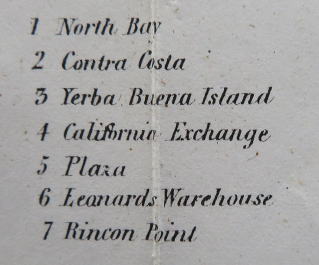 |
10 セントラルワーフ(中央埠頭) は2図の右端・3図では中央の波止場。 ポウハタン号はヴァレホ埠頭(いま9番埠頭)の手前で錨を下した。この埠頭は、この図の後に中央埠頭よりも西(左)に新しく造られたらしい。 12日前に着いた咸臨丸は修理のためメーア島の海軍造船所に滞在していることがわかり、昼過ぎにポウハタン号はヴァレホ埠頭に着岸せず錨を挙げて、1、ノースベイの左奥に向かって進んだ。日本人一行を見ようとヴァレホ埠頭に集まったたくさんの市民はそのまま置き去りになった。 |
ただし絵図につけた番号が細かすぎて 照合困難です The numbers on the map are so small that they are difficult to match. 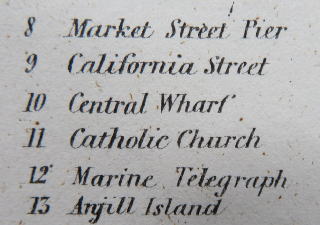 |
| No. 10 (Central) Wharf can be seen on the right side of Figure 2 and in the center of Figure 3. The Powhatan dropped anchor in front of the Vallejo Wharf (now Wharf 9). It seems that this wharf was newly built to the west (left) of the central wharf after this picture was drawn. It turned out that the Kanrin Maru, which had arrived 12 days earlier, was staying at the naval shipyard on Mare Island for repairs, so in the early afternoon the Powhatan raised anchor instead of landing at the Vallejo wharf and proceeded to the far left of North Bay as shown in the Figure 1. Many citizens who gathered at the Vallejo Wharf to see the Japanese people were left behind. |
||
| サンフランシスコ入港の様子 万延元年(1860)三月八日(3月28日水)、ポウハタン号は朝を待って八時に海門に入りました。海門からそのまま進んで行くと広いサンフランシスコ湾が左右に広がります。南の海門の崖下に、海に面してレンガ造りのがっしりした砲台が見えます。 艦首に日の丸を掲げたポウハタン号がサンフランシスコ湾に近づくと、水先案内船がやってきて案内人が乗り込みます。やはりポウハタン号に気づいた巡視船が到着を祝して歓迎の祝砲を11発放ちます。ポウハタン号が答礼砲を放つと、碇泊中の米国軍艦をはじめ英仏ロシアなどの艦船も気づいて歓迎の日の丸を掲げ祝砲を放ちました。港内はたちまち轟く砲声と立ち込める砲煙に包まれ、煙が晴れると日本からの遣米使節の到着を知った男女市民が、一目日本人を見ようと黒山のようにヴァレホ埠頭に詰め掛けていました。 *日付変更・・・通詞の名村五八郎以外は日付変更線で(東へ向かう場合は)同日を繰り返す変更をしていないので、多くの日記で「三月九日サンフランシスコ到着」と記述している。 |
||
| Arriving at the Port of San Francisco On WC March 28, Wednesday (JC March 8), 1860, the Powhatan entered the sea gate at eight o'clock in the morning. As it proceeded from the sea gate, the wide San Francisco Bay spread out on both sides. At the bottom of the cliffs of the southern gate, they could see a solid brick battery facing the sea. As the Powhatan approached San Francisco Bay with the Japanese flag on the bow, a pilot boat arrived and a pilot boarded the ship. A patrol boat, also noticing the POWHATAN, fired eleven shots of welcome to celebrate her arrival. As the POWHATAN fired a salute, U.S. warships at anchor, as well as British, French, Russian, and other ships, noticed and fired a salute with the Japanese flag. The harbor was immediately enveloped in the sound of roaring guns and the smoke from the guns. When the smoke cleared, citizens, both men and women, who had heard of the arrival of the Japanese mission, crowded the Vallejo wharf like a black mountain to catch a glimpse of the Japanese. * Date change... Except for Gohachiro Namura, an interpreter, no one changed the date at the date line (when heading east) to repeat the same day, so many diaries by the mission members wrote "arrived San Francisco on JC March 9," but it was actually "JC March 8," 1860. |
||
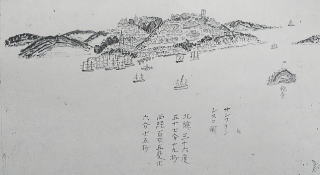 ▲サンフランシスコ図 小栗忠順従者佐藤藤七『渡海日記』より ▲ From “Tokai Nikki (Diary of Crossing the Pacific Ocean)” by Toshichi Sato, a follower of Tadamasa Oguri. |
||
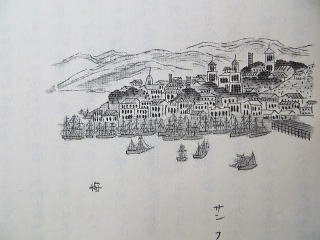 |
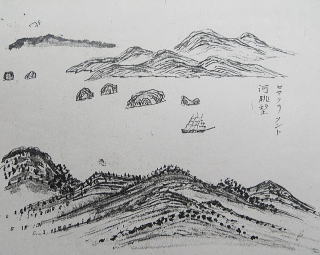 |
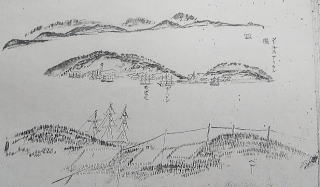 |
| ▲サンフランシスコ港 小栗忠順従者木村鉄太『航米記』 ▲ Port of San Francisco A drawing in “Kobeiki (Report of visiting the U.S.)” by Tetsuta Kimura, a follower of Tadamasa Oguri |
▲ヒャクリメント河眺望 『渡海日記』 ▲ View of the Sacrament River A drawing in “Tokai Nikki (Diary of Crossing the Pacific Ocean)” by Toshichi Sato |
▲メールスアイランド(メーア島) 『渡海日記』 左咸臨丸 右ポウハタン号 手前がヴァレホ ▲ Mare Island A drawing in “Tokai Nikki (Diary of Crossing the Pacific Ocean)” by Toshichi Sato We can see the Kanrin Maru on the left, the USS Powhatan on the right and the Vallejo Wharf on the foreground. |
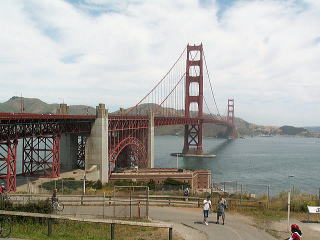 |
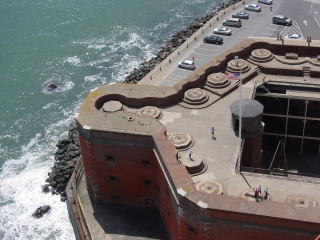 |
 |
| ▲砲台 当時はまだなかった金門橋ブリッジの下に、ポウハタン号到着を歓迎して祝砲を放った砲台が保存されている。 ▲ The Battery near the Golden Gage Bridge: Under the bridge, which did not exist at that time, the battery that fired a gun to welcome the arrival of the Powhatan is now preserved as "Fort Point National Historic Site." |
||
| 遣米使節 メーア島に滞在 メーア島の海軍造船所施設は廃止となり、たくさんの工場やドックなどがそのまま残され、わずかに記念館に人の気配があるのみとなっている。 Mare Island where the mission stayed The naval shipyard facilities on Mare Island have been decommissioned, and many factories and docks remain intact, with only a few signs of human presence in the memorial hall. |
||
 |
 |
 |
| ▲記念館内部 米海軍最後の機帆軍艦としてポウハタン号の模型もある ▲ Inside of the Memorial Hall: A model of the Powhatan is displayed as U.S. Navy's last sailing warship. |
▲カニンガム提督 (造船所記念館) ▲ Admiral Cunningham (Exhibited at the Shipyard Memorial Hall) |
▲造船所建物 ▲ Shipyard Building |
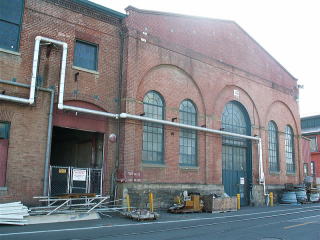 |
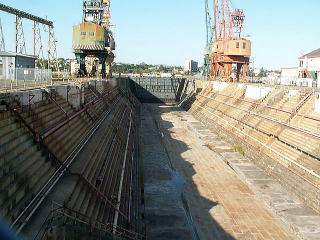 |
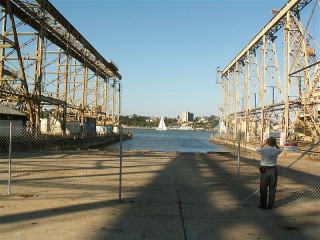 |
| メーア島海軍造船所跡 先に着いた咸臨丸はサンフランシスコ湾の奥のメーア島で嵐で傷んだ船体修理を行っていた。ポウハタン号もここへやってきて感激の再会を果たし、そのままここに滞泊。歓迎行事などは迎えのボートでSFへ出かけた。当時はこのような掘り込み式のドックはなく、大きな浮きドックが日本人一行に目撃されている。 今は米海軍がサンディエゴに移転撤退し、人けのない場所となっていて、ポウハタン号と咸臨丸がどこに停泊していたのか訊ねようもない。 Mare Island Naval Shipyard Site: The Kanrin Maru, which had arrived earlier, was undergoing repairs to its storm-damaged hull on Mare Island at the far end of San Francisco Bay. The Powhatan also came here and the envoys had a moving reunion with the Kanrin Maru members, and stayed here. The envoys went out to San Francisco on a boat from here to attend welcome events. At that time, this was only the dug-in dock in the U.S. and the Japanese envoys saw the large floating dock. Now that the U.S. Navy has moved to San Diego and it has become a deserted place, there is no way to ask where the Kanrin Maru and the Powhatan anchored. |
||
| サンフランシスコ San Francisco |
||
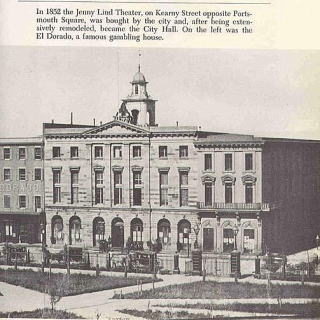 |
 |
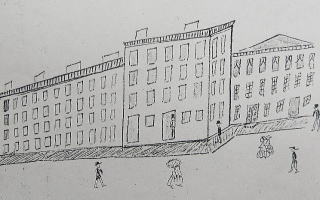 |
| ▲当時の市庁舎 ▲ City Hall at the time |
▲サンフランシスコ街 『航米記』 ▲ A street in San Francisco, from “Kobeiki (Report of visiting the U.S.)” by Tetsuta Kimura |
▲サンフランシスコ 『渡海日記』 ▲ San Francisco, from “Tokai Nikki (Diary of Crossing the Pacific Ocean)” by Toshichi Sato |
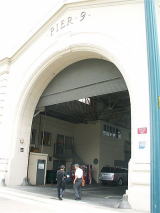 |
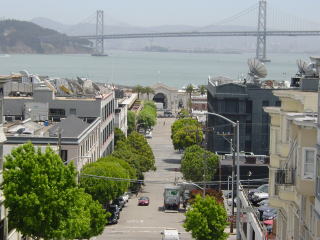 |
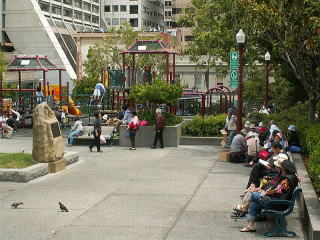 |
| ピア9(9番埠頭) ポウハタン号はこの埠頭の先について咸臨丸を探し、メーア島にいるとわかって着岸しないで、錨を揚げ、メーア島へ向かった。いまは屋根付の埠頭だった。 Pier 9: People on the Powhatan looked for the Kanrin Maru at the end of this pier. They realized that the ship was on Mare Island, so they did not land, lifted its anchor and headed for Mare Island. It is a covered wharf now. |
ヴァレホ通りから見たピア9(ヴァレホ埠頭) valejo st.の坂の上から眼の下に9番埠頭のゲートが見える。かつては桟橋が直接見え、その先に停泊したポウハタン号に周囲のたくさんの船が祝砲を撃ったから、砲煙とすごい音に包まれたはずだ。 Pier 9 (Valejo Pier) seen from Valejo St.: The gate of Pier 9 (the phote on the left) can be seen below from the top of the hill on Valejo street. People could have seen the pier directly from the top of valejo street at the time. As many ships around the pier fired their guns of welcome at the Powhatan docked at the end of the pier, the pier and the surrounding must have been filled with gun smoke and a lot of noise. |
中華街の公園 たくさんの中国人が幾組も固まってトランプなどの賭けごとに夢中になっている Park in Chinatown: When we visited, a large number of Chinese people were gathered in groups, playing cards and other games of chance. |
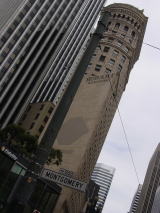 |
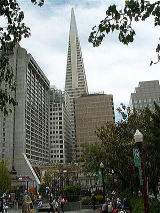 |
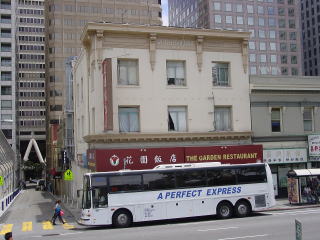 |
| オールドタウン ところどころに往時をしのばせるようなレンガ造りの建物があって、地域全体に落ち着いた歴史を漂わせている。いま西海岸の表玄関はロサンゼルスに移り、港町サンフランシスコは歴史と観光の町の感がある。横浜に似て町のあちこちで歴史的な建物や由緒・風格ある建物にぶつかり、歩いていて楽しい。 Old Town of San Francisco: There are many brick buildings in the town that make us recall a bygone era, giving the whole area a sense of calm and history. Nowadays, the main entrance to the West Coast has moved to Los Angeles, and the port city of San Francisco has the feeling of being a city of history and tourism. Similar to Yokohama, we happened to see historic buildings here and there, and it is fun to walk around. |
||
| |
||
